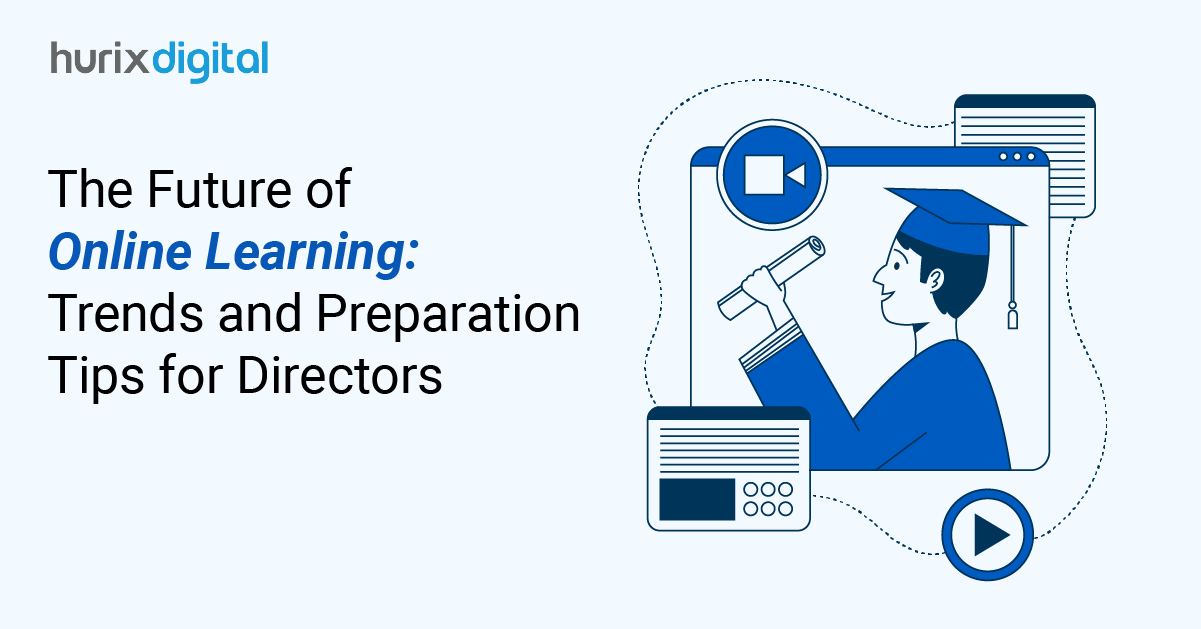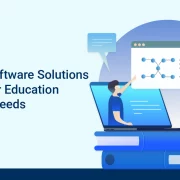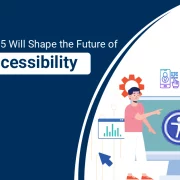
The Future of Online Learning: Trends and Preparation Tips for Directors
Summary
This blog covers trends in online learning like AI, VR, microlearning, and gamification, offering strategies for learning directors to embrace new technologies and enhance UX.
You might be amazed to learn that the global eLearning market is expected to reach $456.8 billion in 2026. This figure, in a way, shows the drastic shift in education and professional training in the contemporary world.
Due to the rapidly changing nature of technology, the ways through which learning and teaching take place in an online environment also change. For learning directors, it is not sufficient, but rather essential to know these changes.
In this blog, you will discover the trends in online learning that have prospects for the future and the ways that will help you manage these changes.
Table of Contents:
- The Evolving Landscape of Online Learning
- Emerging Trends in eLearning
- Preparing for the Future: Strategies for Learning Directors
- Wrapping Up
The Evolving Landscape of Online Learning
The modern online learning environment is dynamic because of evolving technology and changing student expectations. As we proceed, we must consider both our past and future directions.
1. Current State of Online Education
Online learning has steadily been on the rise in recent years. Thus, the Babson Survey Research Group survey shows that over 30% of learners in US higher education have taken at least one distance course. This trend extends beyond higher education. Corporate training has also seen a significant shift toward online platforms.
COVID-19 also paved the way for making online learning mandatory for institutions and businesses. Thus, a number of institutions discovered that online learning fostered more flexibility, cost efficiency, and accessibility. Also, the function of content customization and the general focus on the development of learner-centered approaches have become the major advantages of online classes for many learners and educators.
2. Factors Driving Change
Several key factors are shaping the future of online education:
- Technological advancements: Progress in Machine Learning, AR, and mobile devices is generating new prospects for online education.
- Changing workforce needs: Continuous technological progression calls for consistent learning and retraining.
- Demand for flexible learning options: Learners increasingly expect to learn on their own terms.
- Globalization: Online platforms allow institutions to reach a global audience.
- Economic factors: Virtual education can reduce expenses for both educators and learners.
Heads of online learning must therefore carefully foresee and adjust to these trends in order to maintain the relevance, appeal, and accessibility of their curricula.
Through the adoption of cutting-edge technologies, adapting to the changing demands of the labor market, and offering affordable, adaptable learning options, they may set up their institutions for success in this quickly shifting educational environment.
Also Read: Here’s How Assessment Authoring Software is Revolutionizing Education
Emerging Trends in eLearning
There are many trends lately emerging in online learning. Some of the prominent ones are as follows:
1. AI and Machine Learning
Artificial intelligence and machine learning can significantly help in online learning. These technologies enable:
- Personalized learning experiences
- Intelligent tutoring systems
- Automated grading and feedback
- Predictive analytics for student success
What is more, it is expected that AI will contribute $33.5 billion to the education market by 2030, proving the technology’s importance. This points to the fact that in the coming years, due to the continuous development of AI, the field of online education will be transformed even more with features such as analyzing students’ learning progress and offering better solutions for their learning needs.
2. Virtual and Augmented Reality
Virtual Reality (VR) and Augmented Reality (AR) are creating immersive learning environments. These technologies allow learners to:
- Practice skills in realistic simulations
- Explore complex concepts in 3D
- Engage in virtual field trips and experiments
It should also be mentioned that both technologies are highly helpful for teaching purposes, particularly in fields like manufacturing, engineering, and health. These technologies will be integrated into online learning settings as they become more generally available, offering far more engaging and productive learning opportunities.
3. Microlearning and Mobile Learning
Microlearning and mobile learning are two more popular trends in eLearning. With 91% of mobile users keeping their devices accessible, mobile learning is increasingly popular.
Here are some approaches to making this work:
- Deliver bite-sized content
- Allow learning anytime, anywhere
- Cater to shorter attention spans
- Improve knowledge retention
4. Gamification and Interactive Experiences
Gamification makes learning engaging and fun. It uses game elements like:
- Points and badges
- Leaderboards
- Challenges and quests
- Progress tracking
Interactive experiences promote active participation and critical thinking. They can include simulations, branching scenarios, and collaborative problem-solving activities.
5. Personalized Learning Paths
Adaptive learning technologies develop individualized pathways for each student. They:
- Analyze individual performance
- Adjust content difficulty
- Recommend relevant resources
- Track progress toward learning goals
This allows learners to focus on their weakest areas, boosting efficiency and effectiveness.
Preparing for the Future: Strategies for Learning Directors
Staying back in this digital race is not a choice. So, here are a few strategies for learning directors to get your game going:
1. Embracing New Technologies
To prepare for the future of online education, learning directors should:
- Stay informed about next-gen online learning technologies
- Evaluate technologies that align with organizational goals
- Implement new tools gradually to ensure smooth adoption
- Provide training and support for both instructors and learners
2. Focusing on Skill Development
In the future, the workplace will require continuous skill development. Learning directors should:
- Design programs that emphasize adaptability and lifelong learning
- Focus on developing both hard and soft skills
- Incorporate real-world projects and case studies
- Collaborate with industry partners to ensure relevance
3. Enhancing User Experience
The user experience is crucial in online learning. To improve it, learning directors should:
- Prioritize intuitive interfaces and navigation
- Ensure platforms are accessible across various devices
- Incorporate multimedia and interactive elements
- Gather and act on user feedback regularly
4. Measuring and Improving Outcomes
Data analytics can help track learner progress and course effectiveness. Learning directors should:
- Implement robust learning analytics systems
- Use insights to continually improve programs
- Align learning outcomes with organizational goals
- Develop key performance indicators for online learning initiatives
Also Read: Proven 11 Steps For Designing and Developing Effective Physical Education Curriculum
Wrapping Up
There are a ton of exciting opportunities for online education in the future. Learning directors can better position their organizations for success by keeping up with eLearning trends and predictions. As a result, the emphasis is on creating engaging, effective, and meaningful learning processes that cater to the requirements of contemporary learners.
Continual work and creativity are needed to adjust to the trends in online learning. Yet, companies and corporate organizations should invest in their workforces in order to reap the benefits—a stronger, more intelligent, and more adaptable workforce.
Working with someone who has a deep understanding of the intricacies of digital education is crucial if you want to fully capitalize on the potential of online learning. In this sense, Hurix Digital provides the know-how and tools required to lead your company into the eLearning future. In addition to offering advanced technologies, we collaborate closely with your team to customize tactics that meet your specific objectives and obstacles.
Connect with us for more info!

Senior Vice President – Business Development
Over 25 years of experience in the edtech and workforce learning industry with strong skills in Business Development, Customer Relationship Management (CRM) and Strategy.







